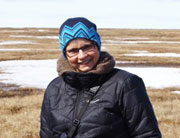The newest addition to the About… series is here! About Seabirds is a beautiful beginners guide to the amazing world of seabirds, and we are very excited to introduce readers to the book and a lot of fascinating seabird facts. These beautiful birds are just one of the many types of animals that Cathryn Sill and John Sill have researched and written about in their long careers as award-winning creators of nonfiction picture books, but we wanted to hear just a little more about this mysterious species that you probably know less about than you think.
 We asked Cathryn Sill to share a little more about the seabirds that she researched and wrote about in order to create About Seabirds. Read on for this former educator’s dive into the mysteries and importance of these birds, as well as what we can do to protect them!
We asked Cathryn Sill to share a little more about the seabirds that she researched and wrote about in order to create About Seabirds. Read on for this former educator’s dive into the mysteries and importance of these birds, as well as what we can do to protect them!
When we created our new book about seabirds, John and I had many reasons for familiarizing children as well as the adults in their lives about this fascinating group of birds that many of us will never have the chance to see. We are hoping that increased knowledge will cause increased appreciation and a desire to protect the habitats and lives of these birds.
Most species of seabirds are difficult to spot
 Because most seabirds live far out at sea and nest on remote islands, they are hard to study. Some seabirds may spend months or even years without ever coming to land. For example, Atlantic Puffins only come to shore to breed during summer like most seabirds. In winter, puffins live far away from land over the open ocean. Because of their remote habits and habitats, it will take a little more research for young readers to learn about seabirds than simply stepping out their door.
Because most seabirds live far out at sea and nest on remote islands, they are hard to study. Some seabirds may spend months or even years without ever coming to land. For example, Atlantic Puffins only come to shore to breed during summer like most seabirds. In winter, puffins live far away from land over the open ocean. Because of their remote habits and habitats, it will take a little more research for young readers to learn about seabirds than simply stepping out their door.
Seabirds are mysterious and hard to track
There are many mysteries about the lives of this group of birds. For years little was known about the movements of seabirds while they are at sea but recent developments in tracking abilities have shed light on their activities. For example, satellite telemetry has allowed researchers to gain valuable information by tracking the travels of birds that live in a very remote habitat. Find out more about satellite telemetry and how it’s used to track birds here. Along with advances in tracking technology, new methods of research have revealed current threats to these unique birds.
Climate change is harming seabirds
Many species of seabirds are suffering because of climate change. As oceans warm, the fish some seabirds feed on are disappearing, causing food shortages. Irresponsible fishing practices wreak havoc on seabird populations by reducing food supplies as well as catching birds in fishing gear. Invasive or nonnative species of animals such as rats and mice have been introduced to seabird nesting grounds from other parts of the world. They prey on eggs and chicks resulting in decimated populations of many seabirds. Plastic pollution is causing the death of seabirds when they mistake it for food, ingest it, and feed it to their young.
How can we help?
As more information becomes known about seabirds, there is hope that more can be done to protect them. Buying sustainably managed seafood and reducing the use of plastic are simple ways of protecting oceans and the animals that live there. It is our desire that people make the responsible choices in their lifestyles that will result in protecting this wonderful planet that is home to all of us.
Where can we go for more information?
Websites:
https://www.allaboutbirds.org/guide/browse/shape/Seabirds
https://www.birdlife.org/europe-and-central-asia/seabirds-and-marine-what-are-seabirds
https://www.fisheries.noaa.gov/national/bycatch/seabirds
Videos:
Seabirds Battling In the Air for Fish
The Dangers of Plastic to Seabirds
Books:
FAR FROM LAND:THE MYSTERIOUS LIVES OF SEABIRDS by Michael Brooke (Princeton University Press)














Leave A Comment
You must be logged in to post a comment.